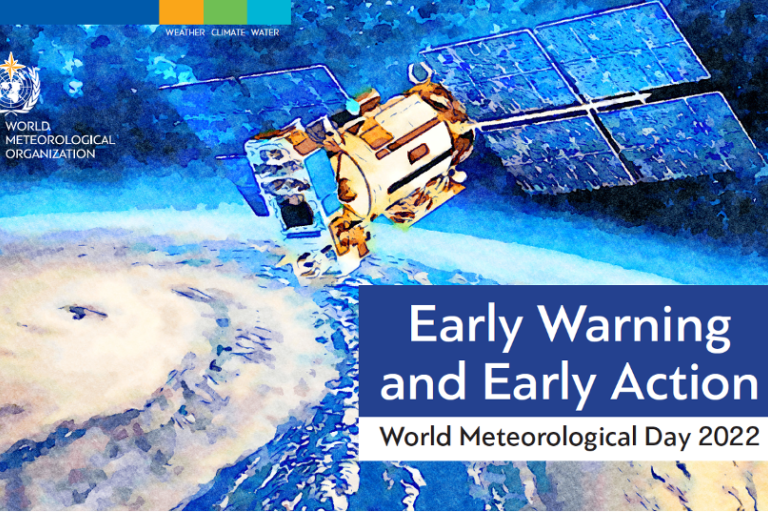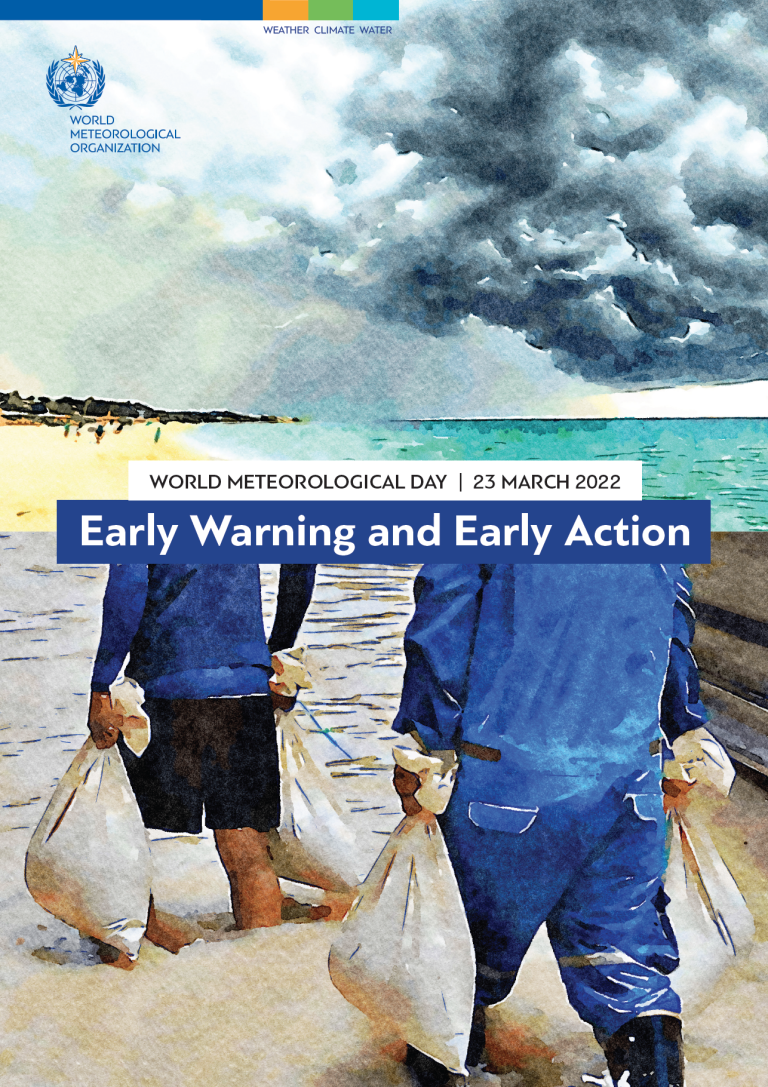World Meteorological Day: Early Warning and Early Action
Weather, climate and water extremes are becoming more frequent and intense as a result of climate change. Yet one in three people are still not adequately covered by early warning systems. And, all too often, the warnings do not reach those who need them most. World Meteorological Day on 23 March 2022 therefore has the theme Early Warning and Early Action, and spotlights the vital importance of hydrometeorological and climate information for disaster risk reduction.

Weather, climate and water extremes are becoming more frequent and intense as a result of climate change. More people are exposed than ever before to multiple hazards.
Forecasts of what the weather will BE are no longer enough. Impact-based forecasts on what the weather will do and what people should do are vital to save lives and livelihoods.
Yet one in three people are still not adequately covered by early warning systems. And, all too often, the warnings do not reach those who need them most.
World Meteorological Day on 23 March 2022 therefore has the theme Early Warning and Early Action, and spotlights the vital importance of hydrometeorological and climate information for disaster risk reduction.
Major new initiative
In a video address to the World Meteorological Day ceremony, United Nations Secretary-General Antonio Guterres is expected to announce a major new initiative on early warnings which are essential to climate change adaptation.
WMO Secretary-General Prof. Petteri Taalas, Special Representative of the UN Secretary-General for Disaster Risk Reduction Mami Mizutori and Selwin Hart, Special Advisor to the UN Secretary-General on Climate Action will lead high-level panel discussions on progress, opportunities and challenges in Early Warning and Early Action. Ambassadors from the United Kingdom and Egypt will also participate in their capacity as presidents of the UN climate change conferences COP26 and COP26. The ceremony will be livestreamed on Zoom and the WMO Youtube Channel and starts at 1300 GMT.

"Climate change is already very visible through more extreme weather in all parts of the world. We are seeing more intense heatwaves and drought and forest fires. Wehave more water vapor in the atmosphere, which leads to extreme rainfall and deadly flooding. The warming of the ocean fuels more powerful tropical storms and rising sea levels increase the impacts, » says WMO Secretary-General Prof. Petteri Taalas in a message to WMO Members and the public.
"We expect this negative trend to continue. Early Warning Systems are a proven, effective adaptation measure, which save lives and livelihoods.”
Why it matters
A WMO report on disaster statistics for the past 50 years showed that more than 11 000 disasters linked to weather, climate and water-related hazards between 1970 and 2019, almost equal to one disaster per day. There were 2 million deaths – or 115 per day.
The number of disasters has increased five-fold in the past 50 years. And the economic cost has soared. That trend is expected to continue.
However, the number of casualties has fallen dramatically – almost three-fold – thanks to better weather forecasts and more coordinated disaster management planning.
Supercomputers and satellite technology have facilitated huge leaps in our forecasting ability and the emergence of user-tailored services, underpinned by decades of research.
There is stronger international, regional and national coordination, matched by active community mobilization.
But much more remains to be done. There are large gaps in weather observations, especially in Least Developed Countries and Small Island Developing States. These gaps pose a risk to the accuracy of early warnings locally and globally.
This is why WMO is spearheading initiatives to strengthen early warnings, improve observations and build resilience.
Early warnings in a warming world
Early warnings are a vital part of climate change adaptation.
The occurrence of extreme events is unprecedented in the observed record and will increase with global warming, according to the Intergovernmental Panel on Climate Change (IPCC).

Weather extremes are occurring simultaneously, causing cascading impacts that are increasingly difficult to manage.
Heat extremes have become more frequent and more intense since the 1950s. All regions are affected.
The proportion of intense tropical cyclones (categories 4-5) is expected to increase with more global warming.
The frequency and intensity of heavy rainfall events has risen since the 1950s and this is expected to continue. The land area affected by more frequent and severe droughts, a notorious slow-onset disaster, is also projected to increase.
Resources
World Meteorological Day commemorates the entry into force on 23 March 1950 of the Convention establishing the World Meteorological Organization. It showcases the essential contribution of National Meteorological and Hydrological Services to the safety and wellbeing of society.
World Meteorological Day digital assets, visuals and speeches are available here
The World Meteorological Day ceremony is a hybrid event, starting at 1300 GMT. Details of the programme and livestream are available here










